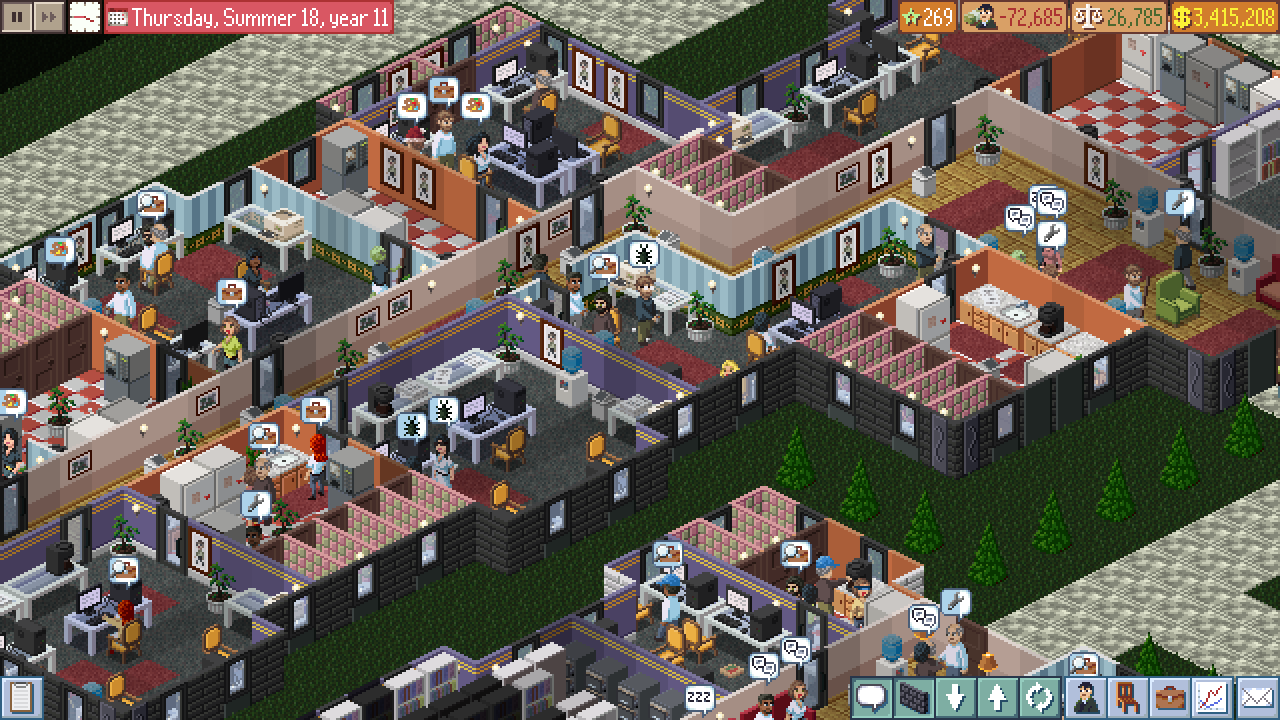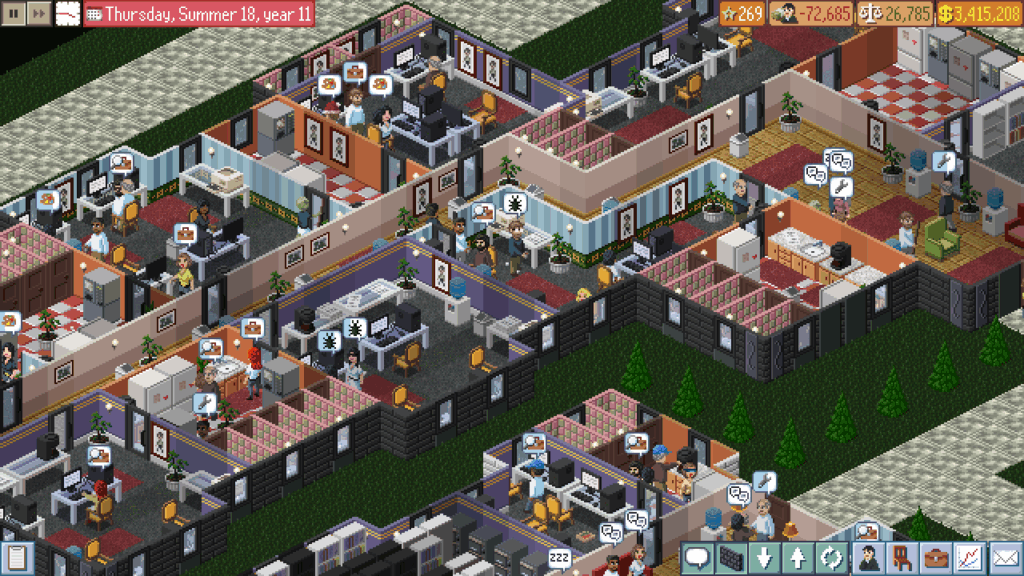Web games are revolutionizing the way we interact with digital entertainment, offering a diverse landscape that caters to various interests and skill levels. From puzzle challenges that stimulate your mind to action-packed adventures that get your adrenaline pumping, web games encompass a wide array of genres. Each type brings its unique gameplay mechanics and appeal, making it essential for players to explore these options to find what truly captivates them.
In addition to the different genres, the design and development of web games play a pivotal role in creating engaging experiences. This involves crafting user-friendly interfaces and ensuring intuitive controls that allow players to immerse themselves fully in the game. Furthermore, social interactions within web games enhance the experience, offering opportunities for multiplayer collaboration and community engagement.
Popular Types of Web Games

Web games have evolved into a diverse landscape, catering to various interests and preferences. With different genres available, players can easily find a game that fits their mood, whether they’re looking for a quick puzzle to solve or an immersive role-playing experience. Understanding the different types of web games provides insight into the mechanics and gameplay elements that define each genre, as well as what appeals to players around the globe.
Puzzle Games
Puzzle games are designed to challenge the player’s problem-solving skills and encourage critical thinking. These games often involve logic, pattern recognition, and spatial reasoning. Common mechanics include matching colors, solving jigsaw puzzles, or completing word-based challenges. The appeal of puzzle games lies in their ability to provide satisfying rewards for overcoming challenges without requiring extensive time commitments.
Examples of popular web puzzle games include:
- Bejeweled: A classic matching game where players swap gems to create lines of three or more, scoring points for each match.
- Sudoku: A number-placement puzzle that requires players to fill a grid so that each column, row, and section contains all digits from 1 to 9.
- Portal: A first-person puzzle platformer that challenges players to navigate through levels using a portal gun, solving puzzles along the way.
Action Games, Web games
The action genre focuses on fast-paced gameplay and physical challenges. Players typically engage in combat, navigate obstacles, and complete time-sensitive tasks. Mechanics often include character movement, timing-based actions, and various weapons or tools. The adrenaline rush and quick decision-making required in these games create a thrilling experience for players.
Examples of popular action games include:
- Super Mario Bros: A platformer that has players navigate through levels filled with enemies and obstacles while collecting power-ups.
- Temple Run: A continuous running game where players must navigate a character through a maze while avoiding obstacles and collecting coins.
- Street Fighter: A classic fighting game where players choose characters to battle each other using a combination of attacks and special moves.
Role-Playing Games (RPGs)
Role-playing games immerse players in a fictional world where they can assume the role of a character and embark on adventures. These games typically feature in-depth storytelling, character development, and exploration. Mechanics may include leveling up, skill progression, and interaction with non-player characters (NPCs). RPGs appeal to players who enjoy narrative-driven experiences and character customization.
Examples of popular web role-playing games include:
- World of Warcraft: An expansive MMORPG that allows players to create characters, complete quests, and engage with a community in a richly detailed world.
- Final Fantasy XIV: A critically acclaimed MMORPG that combines traditional RPG elements with a compelling storyline and vibrant world.
- Runescape: A browser-based MMORPG that offers a blend of questing, crafting, and exploration with an ever-evolving game world.
“The beauty of web games lies in their ability to provide engaging entertainment that can be enjoyed at any time, making gaming accessible to everyone.”
Development and Design of Web Games

The development and design of web games are crucial to their success and player engagement. A well-crafted game combines fun mechanics, appealing visuals, and a seamless user experience. Understanding the elements that contribute to these aspects is essential for any game developer looking to create an engaging online gaming experience. This section will delve into the essential components of web game design, user interface considerations, and a step-by-step guide for developing a simple web game.
Essential Elements of Engaging Web Game Design
Creating an engaging web game involves several key elements that contribute to the overall experience. These elements include:
- Gameplay Mechanics: The rules and systems governing how players interact with the game. A balance of challenge and skill is vital to retain player interest.
- Visual Aesthetics: The art style, graphics, and animations that enhance the game’s atmosphere. Cohesive and appealing visuals can draw players in and keep them immersed.
- Audio Design: Sounds and music that complement gameplay. High-quality audio can significantly enhance the emotional impact and enjoyment of the game.
- Storytelling: A compelling narrative can motivate players to progress. Engaging characters and plotlines create a deeper connection to the game world.
- Level Design: The layout and progression of game levels. Thoughtful level design can introduce new mechanics gradually, keeping the gameplay fresh and exciting.
User-Friendly Interfaces and Intuitive Controls
A user-friendly interface is essential for ensuring that players can easily navigate the game. Consider the following aspects when designing interfaces and controls:
- Clear Navigation: Menus should be straightforward, with labeled buttons and intuitive icons. Players should easily find their way around without confusion.
- Responsive Controls: Players expect immediate feedback when interacting with the game. Controls should feel natural and responsive to enhance the overall experience.
- Accessibility Features: Including options for color blindness, font sizes, and control schemes ensures that all players can enjoy the game.
- Consistent Layout: Maintaining a consistent layout throughout the game helps players become familiar with navigation and function, reducing the learning curve.
Step-by-Step Guide to Developing a Simple Web Game
Developing a web game can be an exciting project. Here’s a simple step-by-step guide to help you get started:
- Conceptualization: Define the game concept, including the genre, target audience, and core mechanics. This foundational step sets the direction for development.
- Prototyping: Create a prototype using tools such as HTML5, CSS, and JavaScript. This stage allows for testing gameplay mechanics and identifying areas for improvement.
- Design Assets: Develop or source visual and audio assets. These elements should align with the game’s theme and enhance the player’s experience.
- Programming: Implement the game logic, including player interactions, scoring systems, and level transitions. Utilize frameworks like Phaser or Unity for efficiency.
- Testing: Conduct thorough testing to identify bugs and gather feedback. Address any issues to enhance gameplay quality and user experience.
- Deployment: Choose a platform to host your game, such as a personal website or a game portal. Ensure the game is accessible and performs well across various devices.
- Marketing: Promote the game through social media, gaming forums, and reviews to attract players and create community engagement.
Social Interaction in Web Games
The landscape of web games has evolved significantly, with social interaction becoming a pivotal aspect of player experience. Many modern web games incorporate features that promote community engagement, facilitating connections among players that enhance gameplay. By creating environments where players can interact, share experiences, and collaborate, these games foster a sense of belonging and enhance the overall gaming experience.
The influence of social features in web games is profound. Multiplayer modes, leaderboards, and in-game chat functions contribute to a vibrant community atmosphere. Players are more likely to engage and remain active in games that encourage social interactions. Community-driven events, such as tournaments and cooperative missions, not only boost player retention but also create a lively ecosystem where players support and challenge each other. The social dynamics that arise from these interactions can lead to friendships that extend beyond the game, proving that web gaming is not just about competition, but also about connection.
Common Social Features in Web Games
Social interaction in web games is facilitated through various features that enhance player engagement. Understanding these features can provide insights into the gaming community and its dynamics. Key features include:
- Multiplayer Modes: Many web games allow players to compete or cooperate with others in real-time, making gameplay more dynamic and exciting.
- Chat Functions: In-game chat systems enable players to communicate, strategize, and build relationships, enhancing the social aspect of gaming.
- Leaderboards: Displaying player rankings motivates users to compete and improves engagement through friendly rivalry.
- Guilds or Clans: These structures allow players to form teams or communities, promoting teamwork and long-term social ties.
- Social Media Integration: Many games allow players to share achievements or invite friends through social platforms, expanding their gaming network.
Impact of Community Interactions on Player Engagement and Retention
The role of community interactions cannot be underestimated. When players feel connected to a community, their investment in the game deepens. Engaging with others leads to increased motivation to play and a higher likelihood of returning. Games with strong social components often report higher retention rates compared to those that lack these features.
Incorporating community events, such as seasonal challenges or contests, serves to reinforce engagement. Players are more likely to participate if they feel that they are part of a larger community effort, leading to greater satisfaction and loyalty.
“Players are more likely to engage with games that foster a sense of community, leading to enhanced retention and enjoyment.”
Comparison of Web Games with Social Experiences vs. Solo Gameplay
Web games can generally be categorized based on their social interaction features. Comparing those focused on social experiences with those emphasizing solo gameplay reveals distinct differences in player engagement.
Games emphasizing social experiences often incorporate collaborative gameplay and community features that encourage interaction, while solo gameplay games focus on individual skill development and personal challenges. The following points illustrate these differences:
- Player Interaction: Social games prioritize interactions among players, creating a collaborative environment, whereas solo games typically offer a more self-reliant experience.
- Community Events: Social games frequently host events that require group participation, while solo games may feature leaderboard competitions that encourage individual performance.
- Game Design: Social games are designed with multiplayer elements in mind, with levels or challenges that necessitate teamwork, contrasting with solo games that are structured around individual advancement.
- Longevity: Social games often benefit from sustained interest due to community involvement, while solo games may have shorter engagement periods as players complete their objectives.
Understanding these dynamics can assist developers and players alike in appreciating the diverse experiences that web games can offer, highlighting the importance of social interaction in enhancing gameplay.
If you’re looking for some fun and engaging entertainment, you should definitely check out poki games online. These games offer a variety of genres that cater to all tastes, from action to puzzles. They are easily accessible and perfect for a quick gaming session during your break or leisure time, ensuring you have a great time without any hassle.
If you’re looking for a fun way to pass the time, poki games online offers a fantastic variety of games to enjoy. From action-packed adventures to brain-teasing puzzles, there’s something for everyone. You can play directly in your browser, making it super convenient. So, dive in and explore the endless entertainment options available at your fingertips!


